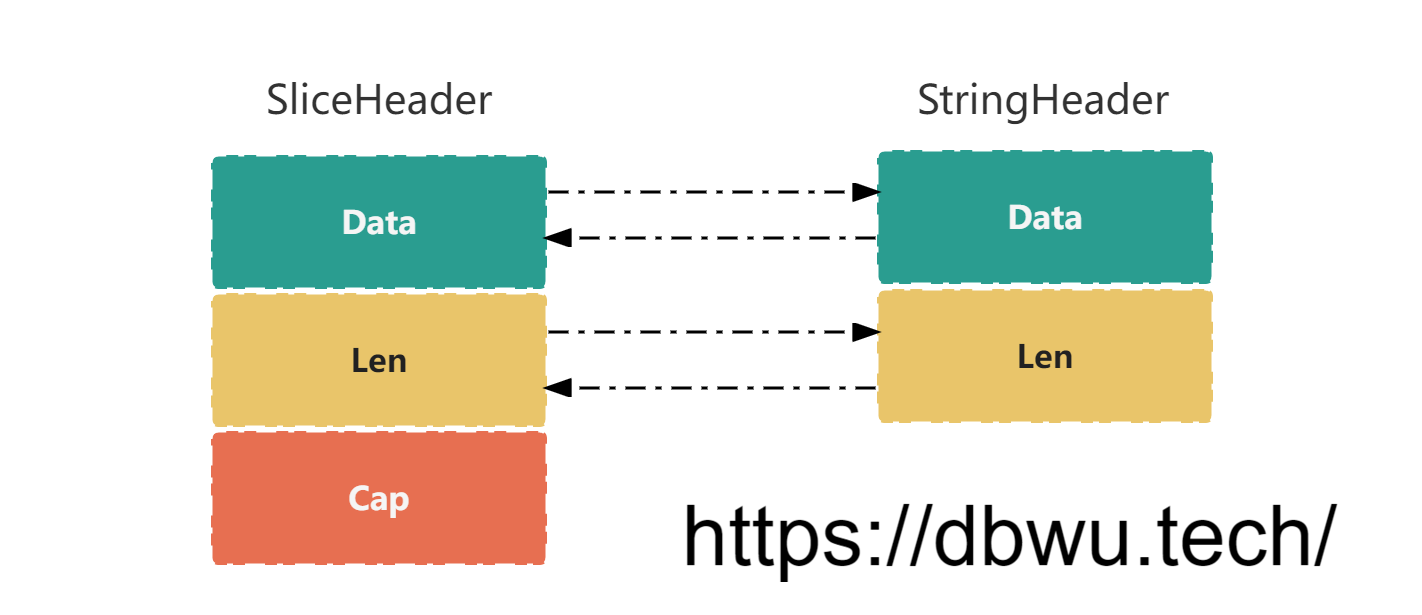概述 #
字符串 与 字符切片 互相转换,是开发中经常用到的功能,但是你能想到,一个简单的优化,就可以提高 10 倍+ 性能吗?
[]byte 转换为 string #
普通方法 #
测试代码如下:
package performance
import (
"testing"
)
func b2s(b []byte) string {
return string(b)
}
func Benchmark_StringWithBytes(b *testing.B) {
bs := []byte(`hello world`)
for i := 0; i < b.N; i++ {
_ = b2s(bs)
}
}
运行测试,并将基准测试结果写入文件:
$ go test -run='^$' -bench=. -count=1 -benchtime=10000000x > slow.txt
优化版本 #
测试代码如下:
package performance
import (
"testing"
"unsafe"
)
func b2s(b []byte) string {
return *(*string)(unsafe.Pointer(&b))
}
func Benchmark_StringWithBytes(b *testing.B) {
bs := []byte(`hello world`)
for i := 0; i < b.N; i++ {
_ = b2s(bs)
}
}
运行测试,并将基准测试结果写入文件:
$ go test -run='^$' -bench=. -count=1 -benchtime=10000000x > fast.txt
使用 benchstat 比较差异 #
$ benchstat -alpha=100 fast.txt slow.txt
# 输出如下
name old time/op new time/op delta
_StringWithBytes-8 0.27ns ± 0% 3.66ns ± 0% +1234.67% (p=1.000 n=1+1)
从输出结果中可以看到,性能方面,优化版本方法 比 普通方法 快 12 倍 还多。
string 转换为 []byte #
普通方法 #
测试代码如下:
package performance
import (
"testing"
)
func s2b(s string) []byte {
return []byte(s)
}
func Benchmark_StringWithBytes(b *testing.B) {
s := "hello world"
for i := 0; i < b.N; i++ {
_ = s2b(s)
}
}
运行测试,并将基准测试结果写入文件:
$ go test -run='^$' -bench=. -count=1 -benchtime=10000000x > slow.txt
优化版本 #
测试代码如下:
package performance
import (
"reflect"
"testing"
"unsafe"
)
func s2b(s string) (b []byte) {
bh := (*reflect.SliceHeader)(unsafe.Pointer(&b))
sh := (*reflect.StringHeader)(unsafe.Pointer(&s))
bh.Data = sh.Data
bh.Cap = sh.Len
bh.Len = sh.Len
return b
}
func Benchmark_StringWithBytes(b *testing.B) {
s := "hello world"
for i := 0; i < b.N; i++ {
_ = s2b(s)
}
}
运行测试,并将基准测试结果写入文件:
$ go test -run='^$' -bench=. -count=1 -benchtime=10000000x > fast.txt
使用 benchstat 比较差异 #
$ benchstat -alpha=100 fast.txt slow.txt
# 输出如下
name old time/op new time/op delta
_StringWithBytes-8 0.28ns ± 0% 4.26ns ± 0% +1422.50% (p=1.000 n=1+1)
从输出结果中可以看到,性能方面,优化版本方法 比 普通方法 快 14 倍 还多。
优化原理 #
首先,我们来看一下字符串和切片的 运行时 底层数据结构。
字符串数据结构 #
type StringHeader struct {
Data uintptr
Len int
}
切片数据结构 #
type SliceHeader struct {
Data uintptr
Len int
Cap int
}

两者比较 #
通过对比,我们可以看到,切片 结构只比 字符串 结构多了一个 Cap 字段,其他字段和顺序都相同, 所以可以直接通过 指针互换 的方式来实现两者的互相转换。
小结 #
本小节主要介绍了 字符串和 []byte 互相转换的 普通方法 和 优化方法,并进行了对应的基准测试和测试结果比较,
优化方法 后的方法可以提升高达 十几倍 的性能,其实在主流的很多框架源代码中,这两个 优化方法 的身影随处可见。
读者可以将这两个方法集成到自己的项目中,试试性能能否提升。

